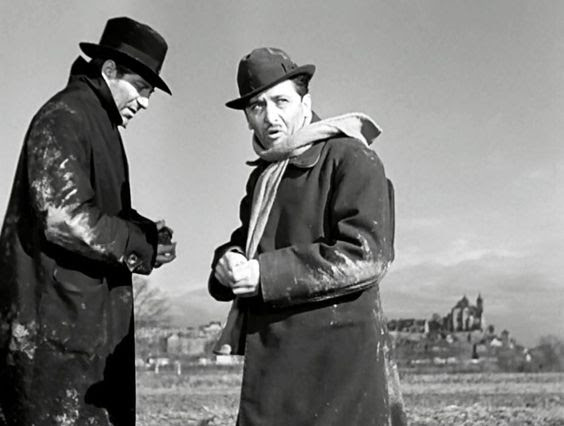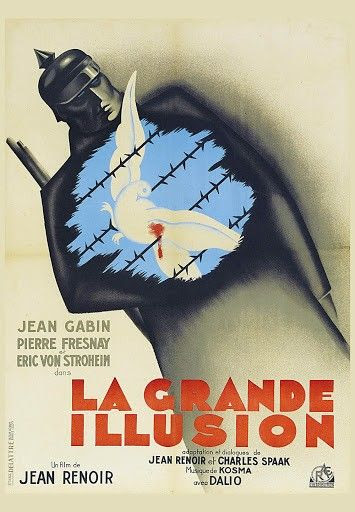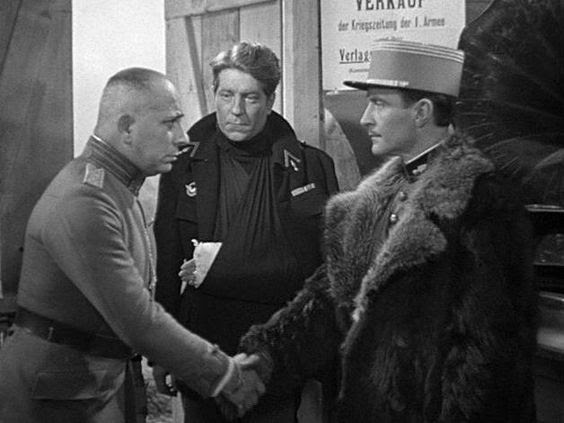La grande illusion is a humanist work and Jean Renoir had the courage to shoot this film by attacking the anti-Semitism that was very present in France and in Europe.
The film of Jean Renoir is a pure masterpiece, until 1970, it was always in the list of the ten best films of all time. Often cited as one of the most important films in world cinema, it is one of the few films to be included in the permanent collection of the Museum of Modern Art (MoMA) in New York.
The film also ranks fifth on the list of the best films in the history of cinema, published on the occasion of the 1958 World’s Fair in Brussels.
Strongly criticized by Louis Ferdinand Céline in 1937, in his anti-Semitic pamphlet “Bagatelles pour un massacre”, on the grounds that a Jew could not be as sympathetic as Lieutenant Rosenthal.

“Every Democrat in the world should see this film,” said President Roosevelt .
The film remained in theaters in New York for thirty-six weeks.
Joseph Goebbels, of sinister memory, considered this film “cinematic enemy number one” and sought to destroy all copies. The film was banned in Germany by the Nazi regime and in France by the occupation authorities on October 1, 1940.
Because of the pacifist spirit, claimed by Jean Renoir, and the idea of fraternization between peoples, the film was banned in occupied Europe during the Second World War.
The Toulouse Film Library recovered the original negative of the film in the 1970s from the Soviet film archives. It had probably been recovered in Berlin in 1945 by the Soviets. It was this negative that made it possible to develop a restored version of the film in 2012.
This film depicts characters of various classes (two aristocrats, a Parisian titi, a dressmaker and son of a Jewish banker, an actor, a schoolteacher, an engineer, etc.) during the First World War. This work, which shows the end of the French and German aristocracies, endeavors to present the power relationships and affinities between the different social classes beyond borders and conflicts. La Grande Illusion is neither an adventure film, nor even a war film (there are no combat scenes).
The film is interpreted as a charge against nationalism and anti-Semitism.
Different trajectories for the two stars of the time Jean Gabin and Pierre Fresnay.
Jean Gabin refused to collaborate with the Vichy government and the Nazi authorities.
Out of patriotism, he enlisted in April 1943 in the French fighting forces of General de Gaulle to liberate his country. He embarked as a gunner, head of the gun crew on the tanker Élorn, and crossed the Atlantic in a convoy bound for Casablanca. The convoy was attacked by U-boats and German planes as it approached the Mediterranean and off Cape Ténès. As a volunteer in the 1st Armoured Rifle Regiment, he was, at his own request, a Sherman tank commander on board the M10 Wolverine Souffleur II, under the command of Ensign André Gélinet, the future Vice-Admiral. He then belonged to the 2nd squadron of the armoured rifle regiment of the famous 2nd armoured division of General Leclerc.
In the spring of 1945, he took part in the liberation of the Royan pocket and then in the German campaign which led him to Hitler’s Eagle’s Nest at Berchtesgaden 14. At the end of the war, he was awarded the Military Medal and the Croix de Guerre.
As for Pierre Fresnay, he adopted a complacent attitude towards the Nazi occupier and the Vichy government.
In fact, he took over the direction of the first sub-commission of the Comité d’organisation de l’industrie cinématographique (COIC), a financial decision-making and censorship body for cinema within the Comité d’organisation. This body was under the supervision of the Famille professionnelle des spectacles, a body for the control and development of the entertainment industry provided for by the Charte du travail within the framework of the corporatist policy desired by the Vichy regime. Notorious collaborators such as Léo Joannon played an active role in the COIC.
At the Liberation, the films he had made during the Occupation for the German company Continental-Films, directed by Alfred Greven, and his decoration with the Francisque earned him a six-week stay in the Paris depot, until he was cleared for lack of evidence. George Adam, a member of the Resistance, wrote in Les Lettres françaises of June 2, 1945:
“Mr. Pierre Fresnay not being in the poorhouse, since he earned quite a bit of money during the occupation, could live in the country; he might have succeeded in this way in making people forget that this money was earned through active collaboration with the Continentale, a purely Boche film company. “
This sympathy for the Vichy regime seems to be more than just opportunism when, in 1950, he joined the Association of Friends of Robert Brasillach, a man of letters known for his political commitment to the extreme right and shot at liberation.
The film is a huge worldwide success and all the press praises this exceptional film.

It was sold out at every screening and broke all attendance records: 1.55 million francs in four weeks, 200,000 spectators in two months in one theater, the best revenue of 1937. The film has accumulated an estimated 12.5 million admissions in all theatres, including 6.5 million since 1945. (2 664 887 admissions in 1958).
When the film was re-released in theaters on September 4, 1946, La Grande Illusion totaled 5,606,473 admissions until December 31, 1959. Between September 1946 and December 31, 1969, it totaled 6,368,962 admissions upon its 2012 re-release, 32,479 admissions .
In the United States, La Grande Illusion has totaled $414,620 since re-releases starting in 1999.



Comment here